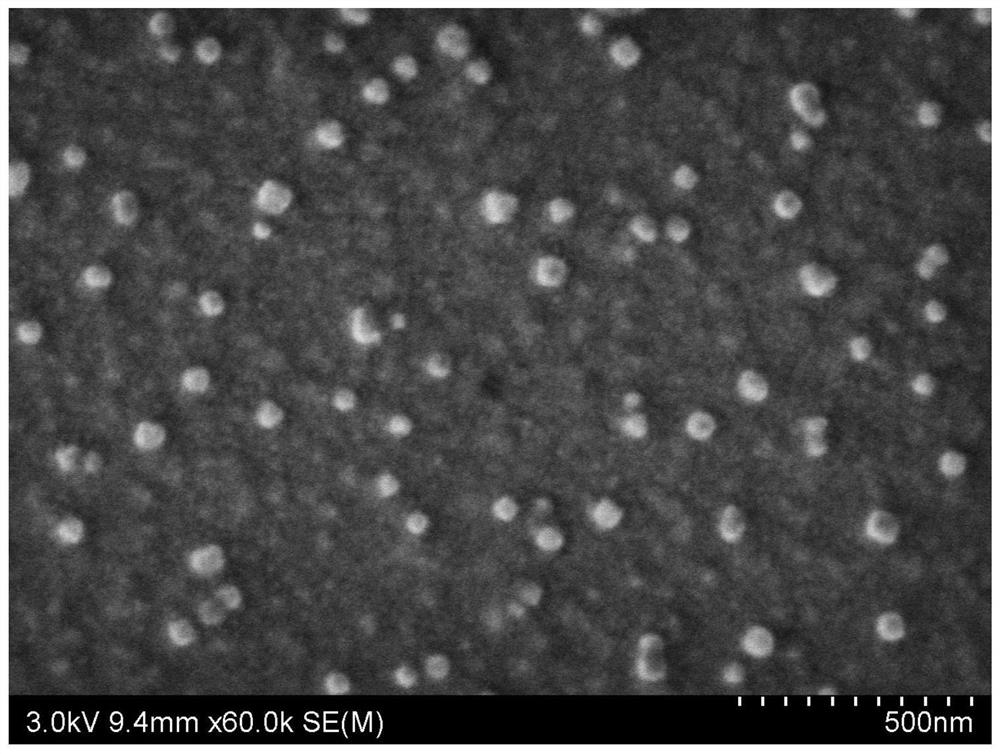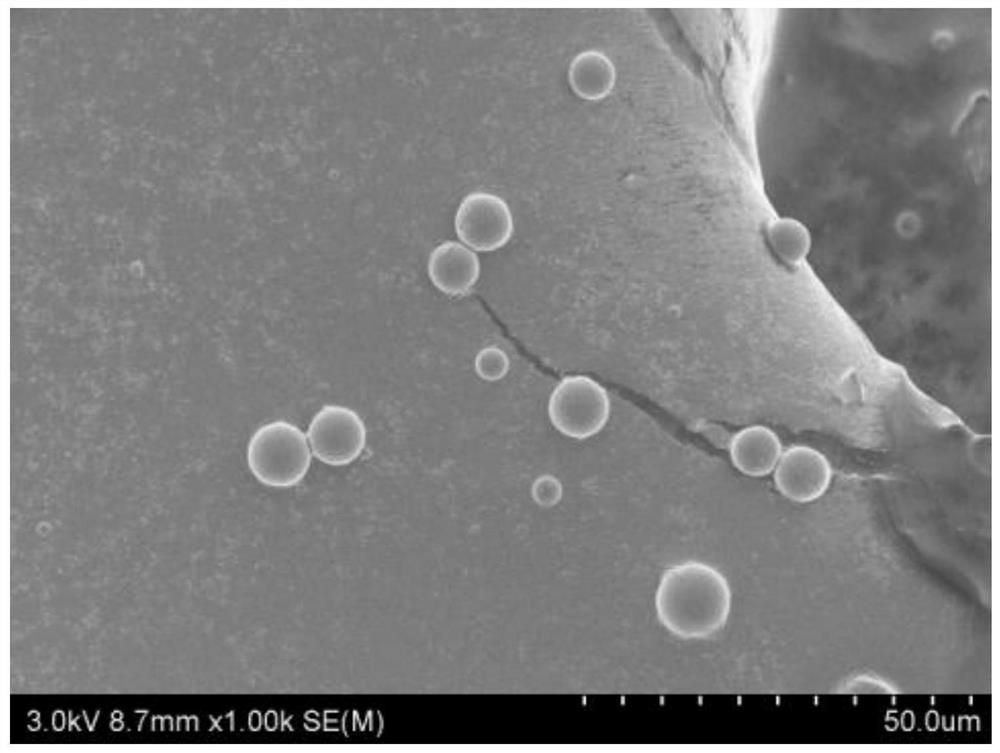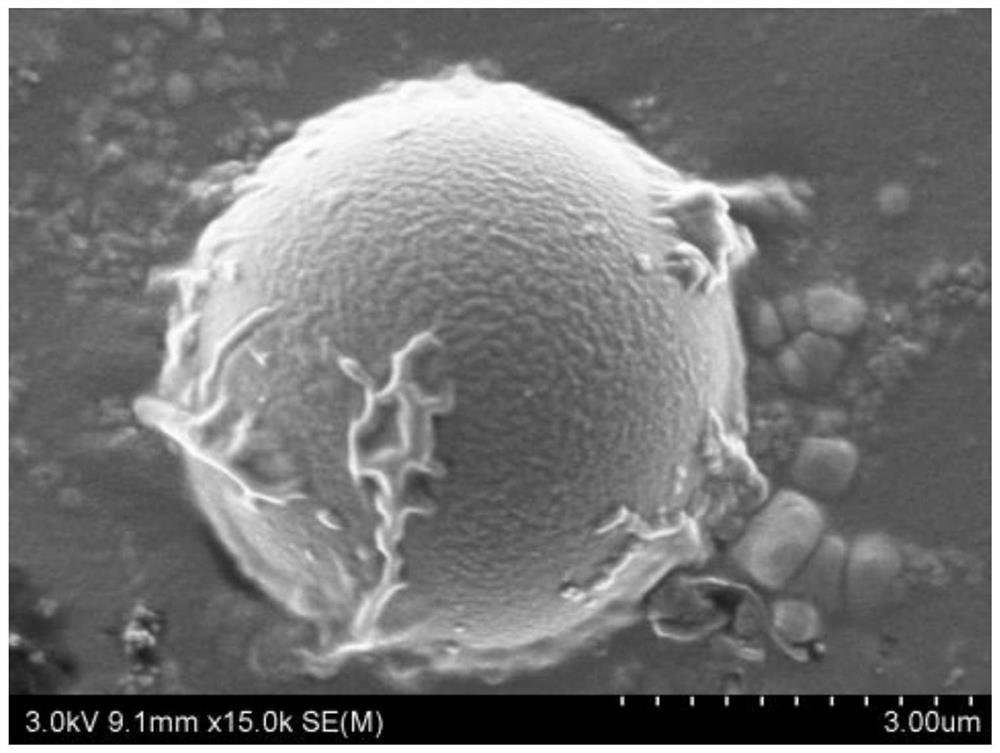A microfluidic method capable of photodegrading dyes to prepare copper-loaded nano-titanium dioxide-chitosan composite microspheres
A technology of nano-titanium dioxide and composite microspheres, which is applied in the field of photocatalytic degradation materials preparation, can solve problems such as difficult direct application, complex composition, and high probability of electron-hole recombination, so as to promote photocatalytic activity, protect the environment and Water resource and effect of photocatalytic activity improvement
- Summary
- Abstract
- Description
- Claims
- Application Information
AI Technical Summary
Problems solved by technology
Method used
Image
Examples
Embodiment 1
[0047]Weigh 11g of tetrabutyl titanate and add 37mL of absolute ethanol, ultrasonically shake for 15 minutes, as A solution; Measure 11mL of deionized water and 12mL of glacial acetic acid, add 38mL of absolute ethanol as B solution, put it into a three-necked flask, Stir in a 23°C water bath. Pour liquid A into a constant pressure funnel, and adjust the switch to slowly drip into liquid B. This process lasts for about 2.2 hours, during which the solution gradually turns blue. After dripping, continue to stir for 50 minutes, then transfer to a petri dish and let it stand until a gel is formed.
[0048]Weigh 12g of the prepared nano-titania gel into a three-necked flask, take 10mL of 120g / L amino-terminated hyperbranched polymer (HBP-NH2) prepared in the laboratory and 40mL of absolute ethanol to mix and transfer Put it into a constant pressure funnel, dissolve the glue at 23 degrees Celsius, then add 0.7mL of copper sulfate solution with a concentration of 0.15M, react for 50 minutes, ...
Embodiment 2
[0052]Weigh 9g of tetrabutyl titanate and add 32mL of absolute ethanol, ultrasonically shake for 8 minutes, as A solution; Measure 8mL of deionized water and 8mL of glacial acetic acid, add 32mL of absolute ethanol as B solution, put it into a three-necked flask, Stir in a 17°C water bath. Pour liquid A into a constant pressure funnel, and adjust the switch to slowly drip into liquid B. This process lasts for about 1.8 hours, during which the solution gradually turns blue. After dripping, continue to stir for 30 minutes, then transfer to a petri dish and let it stand until a gel is formed.
[0053]Weigh 9g of the prepared nano-titanium dioxide gel into a three-necked flask, take 6mL of 90g / L amino-terminated hyperbranched polymer (HBP-NH2) prepared in the laboratory and 44mL of absolute ethanol to mix and transfer. Put it into a constant pressure funnel, degumming at 16 degrees Celsius, add 0.5 mL of 0.09M copper sulfate solution, react for 25 minutes, transfer to a hydrothermal reacto...
Embodiment 3
[0057]Weigh 10g of tetrabutyl titanate and add 37mL of absolute ethanol, ultrasonically shake for 11 minutes, as A solution; Measure 11mL of deionized water and 9mL of glacial acetic acid, add 35mL of absolute ethanol as B solution, put it into a three-necked flask, Stir in a 20°C water bath. Pour liquid A into the constant pressure funnel, and adjust the switch to slowly drip into liquid B. This process lasts for about 2.1 hours, during which the solution gradually turns blue. After dripping, continue to stir for 35 minutes, then transfer to a petri dish and let it stand until a gel is formed.
[0058]Weigh 10g of the prepared nano-titanium dioxide gel into a three-necked flask, take the 110g / L amino-terminated hyperbranched polymer (HBP-NH2) 8mL and 42mL of absolute ethanol prepared in the laboratory, mix and transfer Put it into a constant pressure funnel, degumming at 25 degrees Celsius, then add 0.55mL of 0.11M copper sulfate solution, react for 25 minutes, transfer to a hydrother...
PUM
| Property | Measurement | Unit |
|---|---|---|
| diameter | aaaaa | aaaaa |
Abstract
Description
Claims
Application Information
 Login to View More
Login to View More - R&D
- Intellectual Property
- Life Sciences
- Materials
- Tech Scout
- Unparalleled Data Quality
- Higher Quality Content
- 60% Fewer Hallucinations
Browse by: Latest US Patents, China's latest patents, Technical Efficacy Thesaurus, Application Domain, Technology Topic, Popular Technical Reports.
© 2025 PatSnap. All rights reserved.Legal|Privacy policy|Modern Slavery Act Transparency Statement|Sitemap|About US| Contact US: help@patsnap.com



